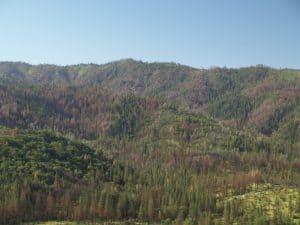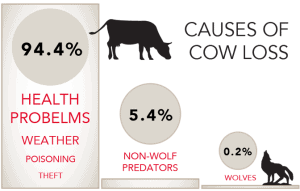The other day at lunch with an old friend, our talk turned to optimistic and pessimistic outlooks regarding the future. He has been reading books by authors who are somewhat to highly optimistic about the future—basing their optimism on advances in science and technology. Two books he mentioned are Stuart Brand’s Whole Earth Discipline: Why Dense Cities, Nuclear Power, Transgenic Crops, Restored Wildlands, and Geoengineering Are Necessary (2009), and Steven Pinker’s Enlightenment Now: The case for reason, science, humanism, and progress (2017).
I mentioned that years ago I was asked to present a set of myths at a Forest Service “adaptive management” workshop in Santa Fe, NM. The first two myths were “Science will find an answer” and “Technology will save us.” I view science and technology as two-edged swords—working both toward our collective good as well as toward our collective detriment. It all depends on how we choose to use them.
When I got home I looked up both books. Brand’s book seems somewhat reasonable—in a Jack Nicholson “Maybe this is as good as it gets” way—judging the book by its title (and a few reviews I found). Both books seem to fall into the trap I identified at the Santa Fe meeting.
I found an interesting review of Pinker’s book by Ian Goldin in Nature.
Here is a snip from Goldin’s review of Enlightenment Now:
Although it is framed as a historically informed template for a new age of reason, Enlightenment Now ultimately becomes something else: an extended dismissal of the arguments of despair that Pinker fears are defining politics and crowding out an alternative approach rooted in rationality and global cooperation. He does not frame the thesis in economic terms. Yet he essentially defends globalization and the growth of market economies by claiming that it has brought more progress than any force in history. As an economist, I agree.
So do I. But I also agree with Goldin’s other arguments:
But globalization has also led to an escalation of risks. What is rational for individuals is increasingly irrational for society. The drivers of progress are rising incomes and connectivity; these also lead to greater negative spillovers and systemic risk. Managing globalization’s underbelly is essential, and the gulf between what needs to be done and what is being done is widening. Economic growth has come at the expense of ecosystems. Because nature does not respond to price signals (rhinos do not reproduce more when their horns are more valuable), increasing freedom of choice has led to overexploitation of a growing number of natural systems. Pinker does cite climate change, but as a worrying exception to a relentlessly positive narrative, rather than as the most glaring example of a wider failure of global commons management.
Goldin concludes with a precautionary note:
I share Pinker’s optimism that this could be our best century, in which poverty and many of the challenges humanity has historically confronted are addressed. Yet there is also a real potential for dystopian outcomes as sea levels, strife, temperatures and resistant infections rise, and biodiversity, democratic institutions, social ties, mental health and resource security are eroded. We need to face up to these and other daunting challenges while nurturing the positivity required to tackle them.
Enlightenment Now is not a balanced account of the present or future. But for the many overwhelmed by gloom, it is a welcome antidote.
I’m more pessimistic than Goldin. Even though I agree that this century could be our best chance to extract ourselves from what may be a lemming-like mass approach toward the edge of a cliff, it seems an unlikely prospect to me. On the other hand the dystopian outcomes seem more likely. But who am I to make such “likelihood” calls. Then again, who is? I regret that I won’t be around long enough to see much of what happens.
I guess I’d have to read Enlightenment Now to see if I agree with Goldin’s call that it is a “welcome antidote” for “the many overwhelmed by gloom.”
As for Brand’s outlook, take a look at what he and coauthors call An Ecomodernist Manifesto (2015).
The Ecomodernist Manifesto is hopeful, if a bit too hopeful as to humanity’s ability to rise above our worst natures. It seems somewhat reasonable at least in these ways: 1) Nature is recognized as a positive good, with suggested safeguarding of both ecosystems and species diversity highlighted, 2) market economics is relegated to secondary role, not a primary driver of all that is good, …. It seems overly optimistic in its portrayal (or lack thereof) of people’s ability to get from the edge of dystopia to the future they propose. And it is optimistic as to the roles portrayed be technology and development. But it was written in 2015, or 1 BT (BT: Before Trump).
On a hopeful note of my own, if we don’t now and continuing forward from here slip into deep dystopia, Trump and others like him on the world stage may ironically give us the wake-up calls we desperately need.




